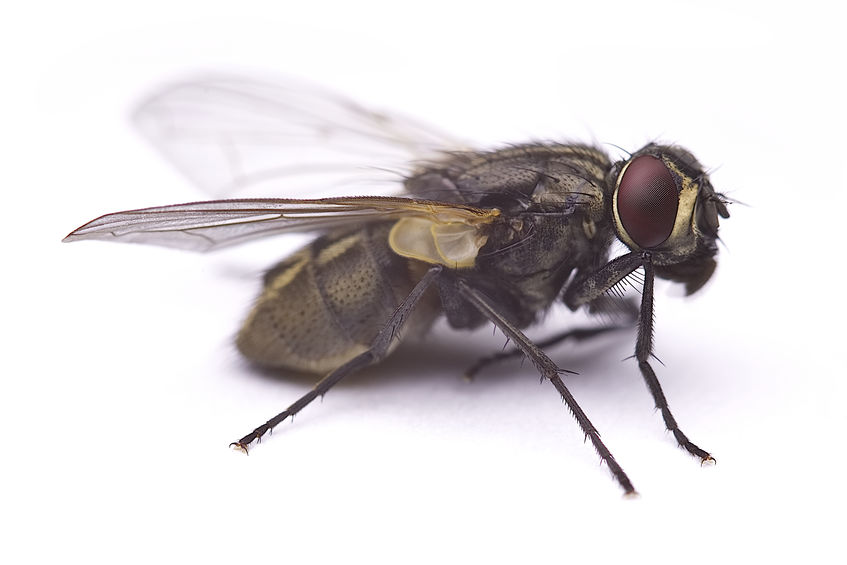Along with ants, cockroaches, and termites, flies are the most commonly controlled insect pests within and around homes and buildings in all areas of the United States, and they are especially problematic in urban and suburban areas of the northeast. According to a recent nationwide survey of pest management professionals, the five most commonly controlled fly pest species are house flies, fruit flies, drain flies, fungus gnats and phorid flies. All of these fly species are synanthropic pests, meaning they benefit from living in close association with humans. These fly species are also aptly referred to as “filth flies” due to their habit of breeding on sources of rotting organic matter, such as excrement, rotting food, compost piles and animal carcasses.
Unsurprisingly, filth flies can carry more than one hundred different pathogens that are known to cause disease in humans, some of which are resistant to antibiotic medications. Despite this, it is not known if human disease commonly results from the mechanical transmission of fly-borne pathogens. Considering that many disease outbreaks seem to be associated with massive fly populations, many experts consider filth flies to be a legitimate public health threat.
During the early 20th century, it became clear to medical experts that filth flies, particularly the house fly, had been responsible for numerous disease outbreaks in urban areas of the US. During this time the house fly became known as the “typhoid fly” due this species’ role as a vector of typhoid fever in the country. Cities that adopted strict urban sanitation measures did not attract large fly populations and typhoid disease rates were low, but cities that did not were overwhelmed with flies and typhoid disease.
After World War Two, federal public health laws were enacted that required sewer lines to be closed and trash to be regularly collected in all US cities, which effectively prevented flies from accessing filth, and therefore, resulted in a sudden decrease in typhoid fever cases throughout the country. As long as flies cannot readily gain access to pathogen-rich materials within human settings, fly-borne disease outbreaks will be prevented. This is why landfills are located several miles outside of urban centers. While such outbreaks can be avoided by means of urban sanitation programs, filth flies should still be considered a potential health threat when they infest homes and restaurants.
Have you fallen victim to a fly infestation only to later find their breeding source within your home?

